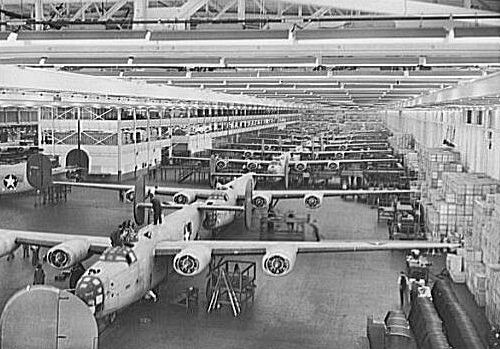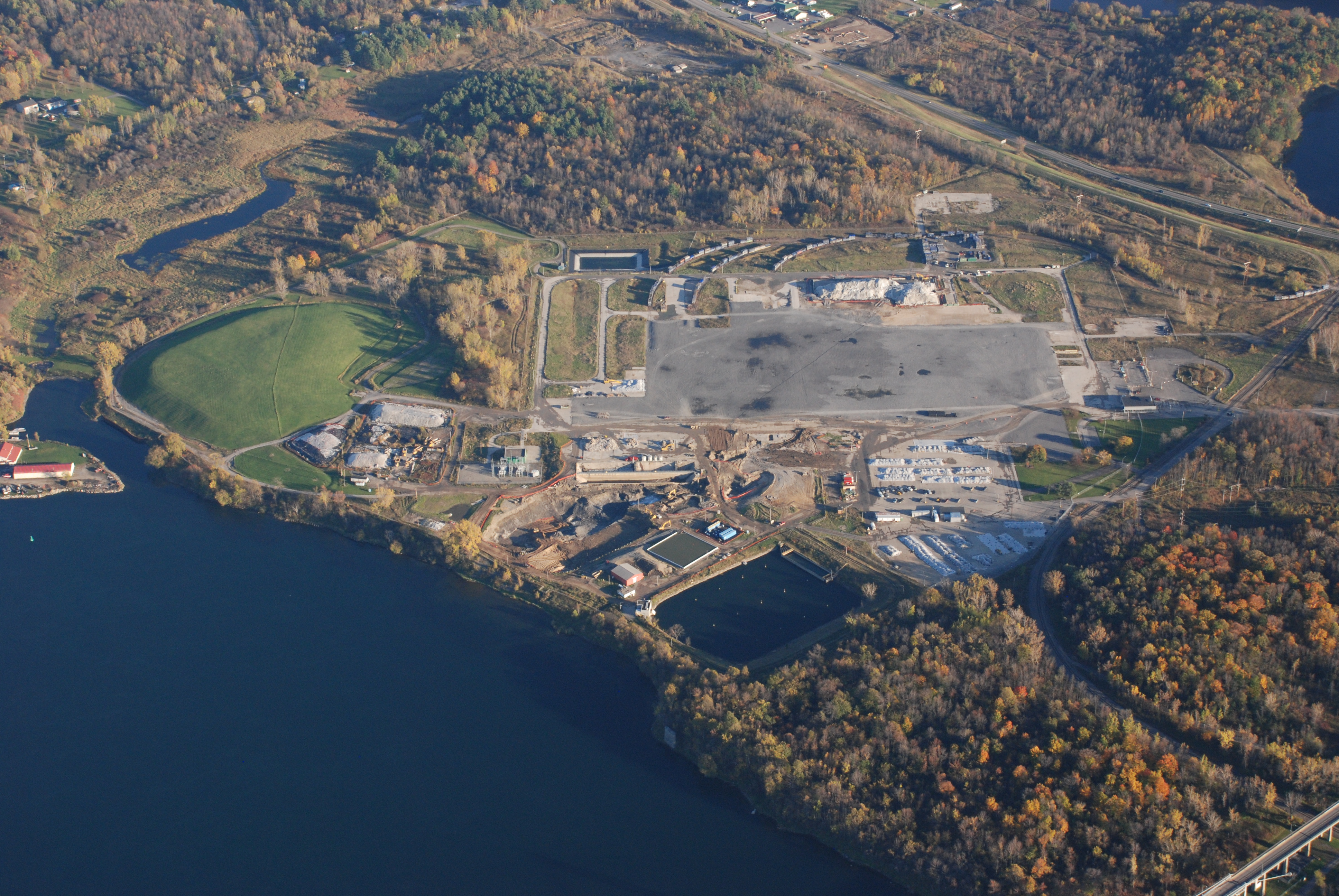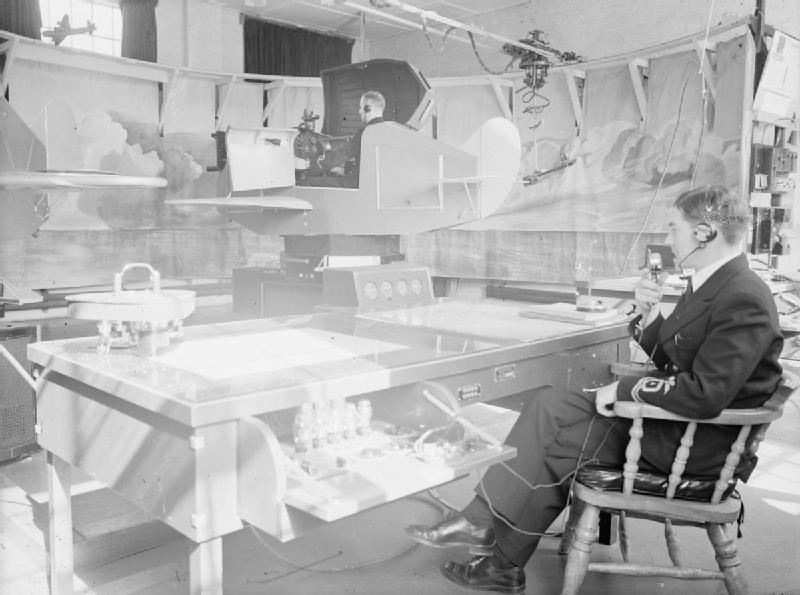|
Yankee Air Museum
The Yankee Air Museum is an aviation museum located at Willow Run Airport in Van Buren Township, Michigan. The museum has a small fleet of flying aircraft and a collection of static display aircraft outdoors. History The Yankee Air Force Inc. was founded in 1981 to pursue these goals: * To preserve a part of Michigan's extensive aviation history. * To acquire one of the original USAAF hangars and restore it to its original condition. * To obtain a B-24 Liberator built at the Ford Willow Run plant, site of the museum. The Yankee Air Force previously operated four divisions in addition to its home base: * Saginaw Valley at Saginaw County H.W. Browne Airport in Michigan * Wurtsmith Division at Wurtsmith Air Force Base in Michigan * Northeast Division at Essex County Airport in New Jersey * Florida Division in Florida 2004 fire On the night of October 9, 2004, the Yankee Air Museum's hangar on the northeast side of Willow Run Airport (KYIP) burned down. The B-17, B-25 and C-4 ... [...More Info...] [...Related Items...] OR: [Wikipedia] [Google] [Baidu] |
Willow Run Airport
Willow Run Airport is an airport in Van Buren Charter Township and Ypsilanti Township, near Ypsilanti, Michigan, United States that serves freight, corporate, and general aviation. Due to its very close proximity to Detroit Metropolitan Airport, no major airlines schedule passenger flights to or from Willow Run. It is included in the Federal Aviation Administration (FAA) National Plan of Integrated Airport Systems for 2017–2021, in which it is categorized as a national reliever airport facility. Opened in 1942, "Willow Run" was synonymous with the American industrial effort that contributed so much to Allied victory in World War II. Operated by the Ford Motor Company, the Willow Run manufacturing plant produced a total of 8,685 B-24 Liberator heavy bombers, completed and in kit form, before closure in April 1945; Willow Run produced more Liberators than either plant owned by the plane's designer, Consolidated Aircraft. Today the Yankee Air Museum, located in one of th ... [...More Info...] [...Related Items...] OR: [Wikipedia] [Google] [Baidu] |
Boeing B-17 Survivors
The Boeing B-17 Flying Fortress is an American four-engine heavy bomber used by the United States Army Air Forces and other Allies of World War II, Allied air forces during World War II. Forty-five planes survive in complete form, including 38 in the United States. Fewer than 10 are Airworthiness, airworthy. Of the 12,731 B-17s built, about 4,735 were lost during the war. After the war, planes that had flown in combat missions were sent for smelting at Aircraft boneyard, boneyards, such as those at Marine Corps Air Facility Walnut Ridge, Walnut Ridge and Kingman Airport (Arizona), Kingman. Consequently, only six planes that survive today have seen combat. Most of the other survivors were built too late to see active service and then were used through the 1950s and 1960s in military and civilian capacities. Many are painted to represent actual planes that flew in combat. Surviving aircraft , 18 B-17s are registered with the Federal Aviation Administration (FAA). These include '' ... [...More Info...] [...Related Items...] OR: [Wikipedia] [Google] [Baidu] |
Boeing PB-1G Flying Fortress
The Boeing B-17 Flying Fortress is a four-engined heavy bomber developed in the 1930s for the United States Army Air Corps (USAAC). Relatively fast and high-flying for a bomber of its era, the B-17 was used primarily in the European Theater of Operations and dropped more bombs than any other aircraft during World War II. It is the third-most produced bomber of all time, behind the four-engined Consolidated B-24 Liberator and the multirole, twin-engined Junkers Ju 88. It was also employed as a transport, antisubmarine aircraft, drone controller, and search-and-rescue aircraft. In a USAAC competition, Boeing's prototype Model 299/XB-17 outperformed two other entries but crashed, losing the initial 200-bomber contract to the Douglas B-18 Bolo. Still, the Air Corps ordered 13 more B-17s for further evaluation, then introduced it into service in 1938. The B-17 evolved through numerous design advances but from its inception, the USAAC (later, the USAAF) promoted the aircraft as ... [...More Info...] [...Related Items...] OR: [Wikipedia] [Google] [Baidu] |
B25-Painted-At-Kalitta-Air-Osecoda-Michigan
B, or b, is the second letter of the Latin-script alphabet, used in the modern English alphabet, the alphabets of other western European languages and others worldwide. Its name in English is ''bee'' (pronounced ), plural ''bees''. It represents the voiced bilabial stop in many languages, including English. In some other languages, it is used to represent other bilabial consonants. History Old English was originally written in runes, whose equivalent letter was beorc , meaning "birch". Beorc dates to at least the 2nd-century Elder Futhark, which is now thought to have derived from the Old Italic alphabets' either directly or via Latin . The uncial and half-uncial introduced by the Gregorian and Irish missions gradually developed into the Insular scripts' . These Old English Latin alphabets supplanted the earlier runes, whose use was fully banned under King Canute in the early 11th century. The Norman Conquest popularised the Carolingian half-uncial forms which latt ... [...More Info...] [...Related Items...] OR: [Wikipedia] [Google] [Baidu] |
Grosse Ile, Michigan
Große or Grosse is a German surname. Notable people with the surname include: *Demetrius Grosse *Maurice Grosse *Katharina Grosse *Ben Grosse *Hans-Werner Grosse *Heinz-Josef Große *Julius Grosse Julius Waldemar Grosse (25 April 1828 – 9 May 1902), German poet, the son of a military chaplain, was born at Erfurt. Biography He received his early education at the gymnasium in Magdeburg, and on leaving school and showing disinclination f ... {{surname German-language surnames ... [...More Info...] [...Related Items...] OR: [Wikipedia] [Google] [Baidu] |
Albert Kahn (architect)
Albert Kahn (March 21, 1869 – December 8, 1942) was an American industrial architect. He was accredited the architect of Detroit and designed industrial plant complexes such as the Ford River Rouge automobile complex. He designed the construction of Detroit skyscrapers and office buildings as well as mansions in the city suburbs. He led an organization of hundreds of architect associates and in 1937, designed 19% of all architect-designed industrial factories in the United States. Under a unique contract in 1929, Kahn established a design and training office in Moscow, sending twenty-five staff there to train Soviet architects and engineers, and to design hundreds of industrial buildings under their first five-year plan. They trained more than 4,000 architects and engineers using Kahn's concepts. In 1943, the Franklin Institute posthumously awarded Kahn the Frank P. Brown Medal. Biography Kahn was born on March 21, 1869, to a Jewish family in Rhaunen, in the Kingdom of Prus ... [...More Info...] [...Related Items...] OR: [Wikipedia] [Google] [Baidu] |
Willow Run Transmission
Willow Run Transmission (also called Ypsilanti Transmission Operations, YTO) was a General Motors factory in Ypsilanti Township, Michigan. Acquired by GM in 1953, it produced Hydramatic and other automatic transmissions for use in vehicles built by General Motors and other automakers. The factory first opened in 1941 as the Ford Willow Run facility, which built B-24 Liberator bombers during World War II, and its original building (still preserved within the fabric of the GM Powertrain plant) was designed by noted architect Albert Kahn. Following the war, the bomber plant was sold as surplus property to the Kaiser-Frazer Corporation, a partnership of construction and shipbuilding magnate Henry J. Kaiser and Graham-Paige executive Joseph W. Frazer. From 1947 to 1953, Willow Run built Kaiser and Frazer cars for Kaiser-Frazer and its successor Kaiser Motors. Kaiser also produced cargo planes during the Korean War at Willow Run under license from Fairchild Aircraft, including the C-11 ... [...More Info...] [...Related Items...] OR: [Wikipedia] [Google] [Baidu] |
RACER Trust
Revitalizing Auto Communities Environmental Response Trust ("RACER") Trust was created in March 2011 by a consent decree in the United States Bankruptcy Court for the Southern District of New York. RACER's mission is to clean up and position for redevelopment certain real properties owned by the former General Motors Corporation (“GMC”) and various GMC affiliates at the time of GMC's bankruptcy in 2009. Through its bankruptcy proceeding, GMC became known as Motors Liquidation Company ("MLC") and has since been effectively dissolved. Before its dissolution, MLC was carved into five separate trusts; the first to settle the claims of unsecured creditors (General Unsecured Creditors Trust); the second (RACER) to manage, perform environmental activities at, and ultimately dispose of certain remaining MLC real and personal property assets; the third to manage asbestos-related claims (Asbestos Personal Injury Trust); the fourth for litigation claims (Action Avoidance Trust); and the ... [...More Info...] [...Related Items...] OR: [Wikipedia] [Google] [Baidu] |
Wayne County Airport Authority
The Wayne County Airport Authority is a governmental entity that operates airports in Metro Detroit in the U.S. state of Michigan. The authority operates Detroit Metropolitan Wayne County Airport, Detroit Metropolitan Airport and Willow Run Airport.About the Authority " Wayne County Airport Authority. Retrieved on December 11, 2010. It has its headquarters in the 11050 Rogell Drive-Bldg 602, Detroit, MI 48242 at Detroit Metropolitan Airport in Romulus, Michigan, Romulus. The authority is overseen by an independent board appointed jointly by the Governor of Michigan, the Wayne County Executive and the Wayne County Commission. Prior to the authority's founding, these two airports were operated directly by Wayne County, Michigan, Wayne County. Michigan Senate Bill 690, signed into law on March 26, 2002, became effective on April 24 of that year, ... [...More Info...] [...Related Items...] OR: [Wikipedia] [Google] [Baidu] |
Michigan Institute Of Aviation And Technology
The MIAT College of Technology (formally Michigan Institute of Aviation and Technology) is a private for-profit technical school with locations in Canton, Michigan and Houston, Texas. The college is a certified Federal Aviation Administration Part 147 school for aircraft maintenance that and also offers Energy Technology and Transportation Dispatch programs. The school was originally the Detroit Institute of Aeronautics, which was later renamed the Michigan Institute of Aeronautics. Around 2005, due to an increased demand for technical careers outside of aviation, the school expanded its curriculum to include Energy Technology and Global Logistics & Dispatch, and became known as the Michigan Institute of Aviation and Technology. Accreditation, Certifications, and Approvals MIAT is accredited by the Accrediting Commission of Career Schools and Colleges, certified by the Federal Aviation Administration, and approved by the United States Department of Education, State of Michigan, ... [...More Info...] [...Related Items...] OR: [Wikipedia] [Google] [Baidu] |
Link Trainer
The term Link Trainer, also known as the "Blue box" and "Pilot Trainer" is commonly used to refer to a series of flight simulators produced between the early 1930s and early 1950s by Link Aviation Devices, founded and headed by Ed Link Edwin Albert Link (July 26, 1904 – September 7, 1981) was an American inventor, entrepreneur and pioneer in aviation, underwater archaeology, and submersibles. He invented the flight simulator, which was called the "Blue Box" or "Link Trai ..., based on technology he pioneered in 1929 at his family's business in Binghamton, New York. During World War II, they were used as a key pilot training aid by almost every combatant nation. The original Link Trainer was created in 1929 out of the need for a safe way to teach new pilots how to fly by flight instruments, instruments. Ed Link used his knowledge of pumps, valves and bellows gained at his father's Link Piano and Organ Company to create a flight simulator that responded to the pilot's co ... [...More Info...] [...Related Items...] OR: [Wikipedia] [Google] [Baidu] |


.jpg)




